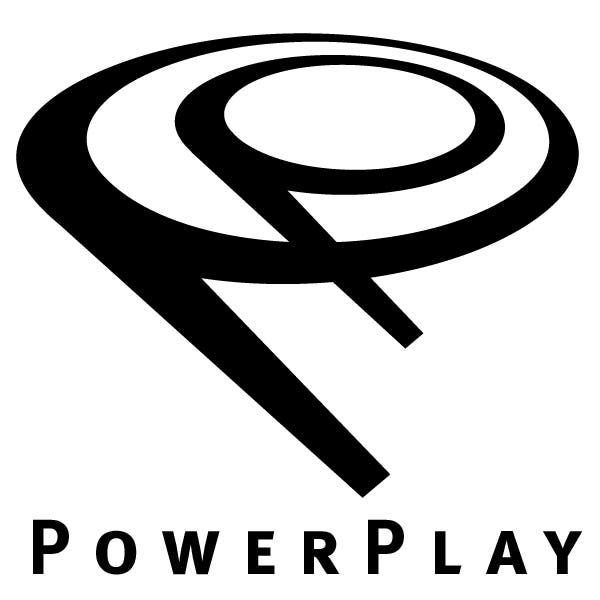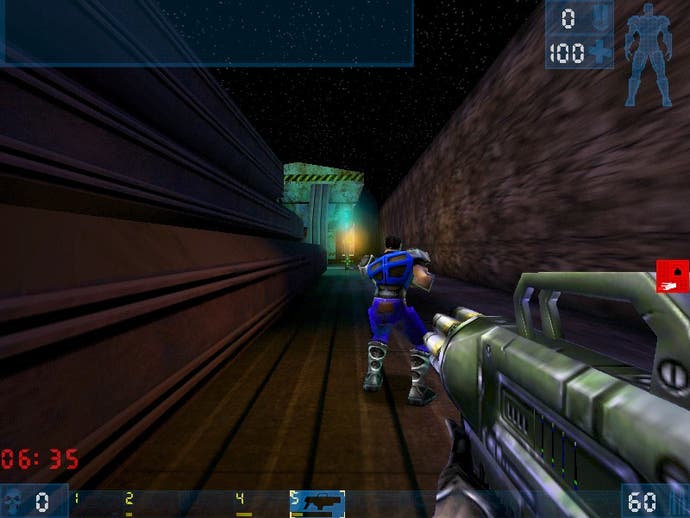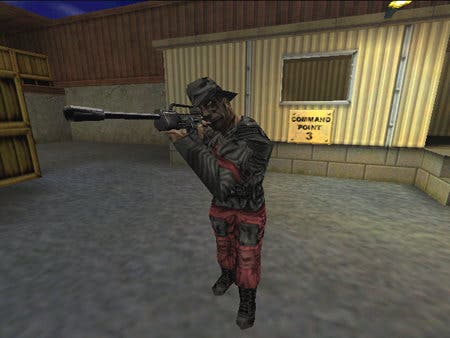PowerPlay
LAN quality gaming over the net?
When somebody comes along and says that they are going to make playing games over the internet as smooth as playing them over a LAN, you would be excused for being skeptical.
But when the people making the claim include Cisco (who make most of the hardware that forms the backbone of the internet) and Valve (the company behind 1998's hit first person shooter, Half-Life), it's worth a closer look.
We talked to Gabe Newell of Valve to find out more...

Protocol
"PowerPlay is an industry effort to identify ways to make the Internet a better platform for entertainment", Gabe explained. "Initially with PowerPlay 1.0 the focus will be on quality of service (i.e. making playing on the Internet feel like playing on a LAN), but over time PowerPlay 2.0 will address functionality as well."
PowerPlay provides "a set of protocols and deployment standards" which are intended to ensure that a gamer's experience of online gaming is as good as possible. The idea is that developers, hardware manufacturers and ISPs will work together to improve the situation.
"Even with cable modems and DSL, there are plenty of horror stories about service providers putting 500 people on a cable segment, or provisioning their service to primarily serve web pages from a caching server with no regard to hops or packet loss for gamers", Gabe told us.
"PowerPlay will address this. Basically if a gamer has the choice of five ISPs for their DSL line, they can pick one of the ones that is PowerPlay compliant with the confidence that the ISP will be adhering to the guidelines laid down for PowerPlay."
These guidelines should ensure that any ISP which carries the PowerPlay badge will be set up to offer the best service possible to gamers. This won't come without cost to the ISPs who implement it though...
"The ISPs are going to need to spend a fair amount of money to be compliant with PowerPlay", Gabe admitted. "But how they get that back is up to them. Some will have a tiered service, and some will just try to recoup their investment through reduced customer churn and customer acquisition."
What this means is that some ISPs may choose to charge gamers extra for a PowerPlay compliant "premium" service.

PowerPlay To The People
In fact, the PowerPlay standards and protocols will eventually stretch throughout the internet gaming chain, from your modem, games and software, through the routers and your ISP, all the way to the server on the other end.
"What that means is that all the pieces of the connection can get better", Gabe told us. "But you DO NOT need all of the pieces in order to get a benefit."
"In other words, a user playing a game which hasn't been patched to support PowerPlay (such as Quake 2) would still see some benefits to being on a PowerPlay network. Would they see more if Quake 2 were updated? Yes."
Most importantly though, this also means that "players without PowerPlay will be able to play games on servers alongside players with PowerPlay". So even if you can't find an ISP in your area that supports PowerPlay, it shouldn't interfere with your gaming. PowerPlay will be a set of standards, not a closed gaming network.
And despite some rather confused wording in the original announcement, Gabe reassured us that "PowerPlay itself doesn't contain any particular monthly subscription fee". Some ISPs may charge you more for using a PowerPlay compliant service, but you won't be paying PowerPlay themselves for the privelege of using their software and standards.
Which is nice.

Support
At the end of the day though, PowerPlay will sink or swim depending on how many software and game developers support it. When it comes to the crunch, just how much work is going to be involved in making a game PowerPlay compliant?
"How much work it will be for the developer really depends upon the kind of application they are developing", according to Gabe. "Updating a first person action game to set the IP preferencing bits in WinSock 2.0 is pretty trivial. Rearchitecting a massively multiplayer RPG around multicast would be a lot of work."
So far things are looking promising though, with a number of high profile developers being named on the PowerPlay website as having expressed an interest, including BioWare (Baldur's Gate), Epic (Unreal Tournament), Relic (Homeworld), and Volition (Freespace).
Up to now Valve and Cisco have been the main driving force behind PowerPlay. "With 1.0, we mainly wanted to prove that there were significant gains that could be accomplished by getting an infrastructure developer, a service provider, and a game company together", Gabe explained.
"We weren't really going to let people look under the hood, as some of the things we are doing aren't really mature enough to be part of a standard. We have had a lot of questions from other developers about what exactly we are doing in 1.0, so we may end up letting more information about that get published, but 2.0 is really where the standards effort looks more like a traditional one."
And it is with PowerPlay 2.0 that the other developers who have signed up will contribute to the project, as the standard will then become an open one. Until then it is still very much under wraps...
Conclusion
And that's the biggest problem with PowerPlay at the moment... It was announced with a big splash, and the list of companies lining up to support it is certainly impressive, but whether it will actually work in practice is anybody's guess.
Notable for their absence from the list of PowerPlay supporters at the launch was id Software, the company which practically invented deathmatch in the first place, and which has contributed a lot to the rapid growth of internet gaming over the last few years.
In a post to the forums on Slashdot, id co-founder John Carmack commented about PowerPlay "I'm all for improvements in networking infrastructure, but at this point, there isn't anything actually there, just an intention to improve gaming".
According to Gabe, "PowerPlay 1.0 is in beta test now, and we are aiming for a Q1 roll-out in the US", though there is still no word of when it will be available outside of the USA.
The "roll-out" will take the form of a public trial using an as-yet un-named American ISP. A free stand-alone PowerPlay version of Team Fortress Classic will be given out to US gamers, along with a free one month subscription to the ISP's PowerPlay-enabled service.
But until then we really won't have any idea just how effective (if at all) it will be, and extravagent claims like "we had people on a LAN playing [TFC] against someone with a 1000 ping, and it was playable" make us rather wary.
When we asked Gabe about this, he told us that "our primary goal is to make [the internet] work better (i.e. people shouldn't have 1000 ping), but it has also taught us how to mitigate the real-world behavior better (i.e. people shouldn't have 1000 ping, but if they do, we can still do a much better job)."
"So, yes, we can make a 1000 ping playable. Essentially we thought you couldn't have smooth gameplay, and an authoritative server and 1000 millisecond client latency, and Cisco said "that's been solved by other applications - try this.""
Of course, at the end of the day a 1000 ping means that (PowerPlay or no PowerPlay) it is taking one whole second for information to get from your computer to the server and back. In a first person shooter at least, under those conditions you can't hit the broadside of a barn, let alone another player, however smooth the game looks, and whatever PowerPlay is doing to your connection to improve things.
The main thrust then seems to be to reduce the pings in the first place, and we certainly aren't getting our hopes up of being able to play at all competitively with a 1000 ping. But if PowerPlay manages to deliver even half of what it is promising it should be a minor revolution for online gaming.
We'll be keeping our fingers crossed, and bringing you more information just as soon as it is available...
-

